A Stochastic Model for Residential User Activity Simulation
Abstract
1. Introduction
2. Related Work
3. Problems and Overview
4. Structure of Modelling
4.1. Activity Modelling
4.2. Generating an Individual Activity Sequence
| Algorithm 1 Generating an individual activity sequence. | |
| |
| ▹ Initialize an empty activity sequence |
| |
| |
| |
| |
| |
| |
| |
| |
| |
| ▹ Append the state s with the duration of l |
| |
| |
4.3. Generating Activity Sequences for Multiple Family Members
| Algorithm 2 Generate a dependent activity sequence with the condition (7). | |
| |
| ▹ Initialize an empty activity sequence |
| |
| ▹ Generate a sub-sequence of , with duration of l using and |
| |
| |
| |
| |
| |
| |
| |
| Algorithm 3 Generate a dependent activity sequence with the condition (8). | |
| |
| ▹ Initialize an empty activity sequence |
| |
| ▹ Generate a sub-sequence of , with duration of l using and |
| |
| |
| |
| |
| |
| |
| |
| Algorithm 4 Generate a dependent activity sequence with the condition (9). | |
| |
| ▹ Initialize an empty activity sequence |
| ▹ A set of non-flexible activities |
| |
| ▹ Subtract the activity set O from A |
| ▹ Generate a sub-sequence of , with the length of duration, l, using and |
| |
| |
| |
| |
| |
| |
| |
| |
5. Implementation
6. Evaluation
6.1. Experimental Settings and Data
6.2. Model Validation
6.3. Algorithm Performance
6.4. Discussion
7. Conclusions and Future Work
Author Contributions
Funding
Conflicts of Interest
References
- Palacios-Garcia, E.J.; Moreno-Munoz, A.; Santiago, I.; Flores-Arias, J.M.; Bellido-Outeirino, F.J.; Moreno-Garcia, I.M. Modelling human activity in Spain for different economic sectors: The potential link between occupancy and energy usage. J. Clean. Prod. 2018, 183, 1093–1109. [Google Scholar] [CrossRef]
- Johnson, B.J.; Starke, M.R.; Abdelaziz, O.A.; Jackson, R.K.; Tolbert, L.M. A method for modelling household occupant behavior to simulate residential energy consumption. In Proceedings of the ISGT 2014, Washington, DC, USA, 19–22 February 2014; pp. 1–5. [Google Scholar]
- General Data Protection Regulation (GDPR). Available online: https://ec.europa.eu/commission/priorities/justice-and-fundamental-rights/data-protection/2018-reform-eu-data-protection-rules_en (accessed on 10 July 2019).
- Santiago, I.; Lopez, M.A.; Gil-de-Castro, A.; Moreno-Munoz, A.; Luna-rodriguez, J. Energy consumption of audiovisual devices in the residential sector: economic impact of harmonic losses. Energy 2013, 60, 292–301. [Google Scholar] [CrossRef]
- Bonke, J.; Fallesen, P. The impact of incentives and interview methods on response quantity and quality in diary-and booklet-based surveys. Surv. Res. Methods 2010, 4, 91–101. [Google Scholar]
- Capasso, A.; Grattieri, W.; Lamedica, R.; Prudenzi, A. A bottom-up approach to residential load modelling. IEEE Trans. Power Syst. 1994, 9, 957–964. [Google Scholar] [CrossRef]
- Muratori, M.; Roberts, M.C.; Sioshansi, R.; Marano, V.; Rizzoni, G. A highly resolved modelling technique to simulate residential power demand. Appl. Energy 2013, 107, 465–473. [Google Scholar] [CrossRef]
- Widén, J.; Wåckelgård, E. A high-resolution stochastic model of domestic activity patterns and electricity demand. Appl. Energy 2010, 87, 1880–1892. [Google Scholar] [CrossRef]
- Widén, J.; Molin, A.; Ellegård, K. Models of domestic occupancy, activities and energy use based on time-use data: deterministic and stochastic approaches with application to various building-related simulations. J. Build. Perform. Simul. 2012, 5, 27–44. [Google Scholar] [CrossRef]
- Richardson, I.; Thomson, M.; Infield, D. A high-resolution domestic building occupancy model for energy demand simulations. Energy Build. 2008, 40, 1560–1566. [Google Scholar] [CrossRef]
- McKenna, E.; Higginson, S.; Grunewald, P.; Darby, S.J. Simulating residential demand response: Improving socio-technical assumptions in activity-based models of energy demand. Energy Effic. 2018, 11, 1583–1597. [Google Scholar] [CrossRef]
- Stokes, M. Removing Barriers to Embedded Generation: A Fine-Grained Load Model to Support Low Voltage Network Performance Analysis. Ph.D. Thesis, De Montfort University, Leicester, UK, 2005. [Google Scholar]
- Paatero, J.V.; Lund, P.D. A model for generating household electricity load profiles. Int. J. Energy Res. 2006, 30, 273–290. [Google Scholar] [CrossRef]
- Yao, R.; Steemers, K. A method of formulating energy load profile for domestic buildings in the UK. Energy Build. 2005, 37, 663–671. [Google Scholar] [CrossRef]
- Marszal-Pomianowska, A.; Heiselberg, P.; Larsen, O.K. Household electricity demand profiles—A high-resolution load model to facilitate modelling of energy flexible buildings. Energy 2016, 103, 487–501. [Google Scholar] [CrossRef]
- Flett, G.; Kelly, N. An occupant-differentiated, higher-order Markov chain method for prediction of domestic occupancy. Energy Build. 2016, 125, 219–230. [Google Scholar] [CrossRef]
- Aerts, D.; Minnen, J.; Glorieux, I.; Wouters, I.; Descamps, F. A method for the identification and modelling of realistic domestic occupancy sequences for building energy demand simulations and peer comparison. Build. Environ. 2014, 75, 67–78. [Google Scholar] [CrossRef]
- Aksanli, B.; Akyurek, A.S.; Rosing, T.S. User behavior modelling for estimating residential energy consumption. In Smart City 360; Springer: Cham, Switzerland, 2016; pp. 348–361. [Google Scholar]
- Basu, K.; Hawarah, L.; Arghira, N.; Joumaa, H.; Ploix, S. A prediction system for home appliance usage. Energy Build. 2013, 67, 668–679. [Google Scholar] [CrossRef]
- IRIS Data. Available online: http://ds.iris.edu/ds/nodes/dmc/data (accessed on 10 July 2019).
- Gagniuc, P.A. Markov Chains: From Theory to Implementation and Experimentation; John Wiley & Sons: Hoboken, NJ, USA, 2017; pp. 1–235. [Google Scholar]
- Gilks, W.R.; Richardson, S.; Spiegelhalter, D. Markov Chain Monte Carlo in Practice; Chapman & Hall: London, UK, 1996. [Google Scholar]
- Bouezmarni, T.; El Ghouch, A.; Mesfioui, M. Gamma kernel estimators for density and hazard rate of right-censored data. J. Probab. Stat. 2011, 2011, 937574. [Google Scholar] [CrossRef]
- Hellerstein, J.M.; Re, C.; Schoppmann, F.; Wang, D.Z.; Fratkin, E.; Gorajek, A.; Kumar, A. The MADlib analytics library: or MAD skills, the SQL. Proc. VLDB Endow. 2012, 5, 1700–1711. [Google Scholar] [CrossRef]
- Torriti, J. Demand Side Management for the European Supergrid: Occupancy variances of European single-person households. Energy Policy 2012, 44, 199–206. [Google Scholar] [CrossRef]
- Frigge, M.; Hoaglin, D.C.; Iglewicz, B. Some implementations of the boxplot. Am. Stat. 1989, 43, 50–54. [Google Scholar]
- Liu, X.; Nielsen, P.S. Scalable prediction-based online anomaly detection for smart meter data. J. Inf. Syst. 2018, 77, 34–47. [Google Scholar] [CrossRef]
- Activity Simulator. Available online: https://github.com/xiufengliu/activitysim (accessed on 10 July 2019).
- CSSR. Available online: http://cssr.surveybanken.aau.dk (accessed on 10 July 2019).

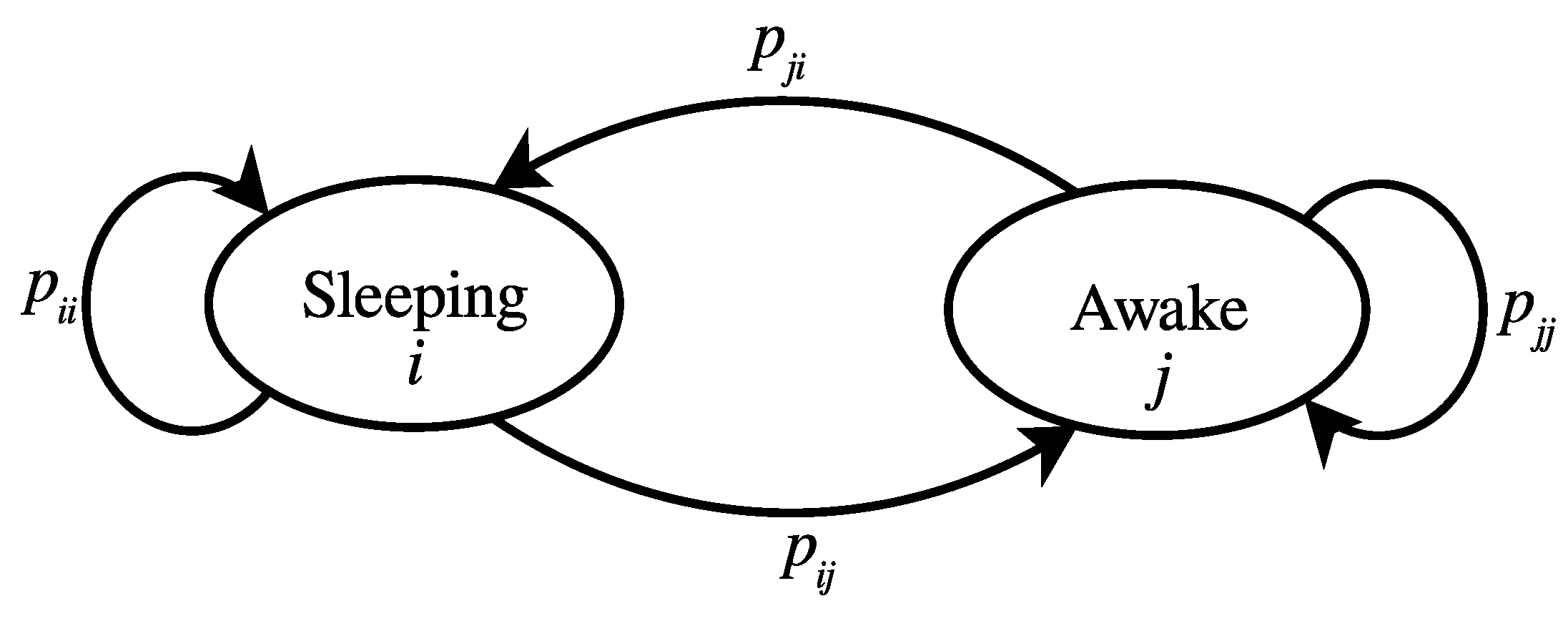

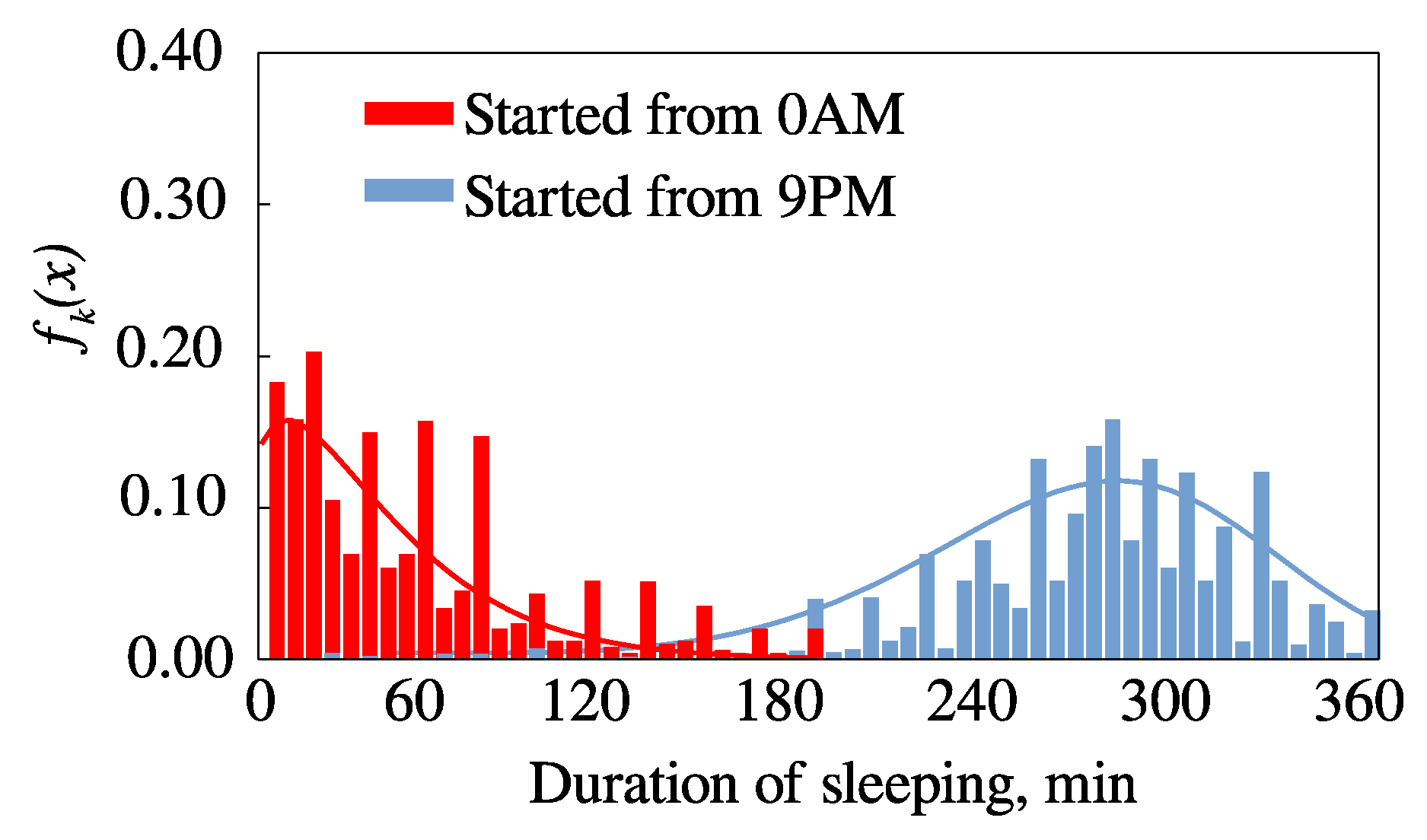

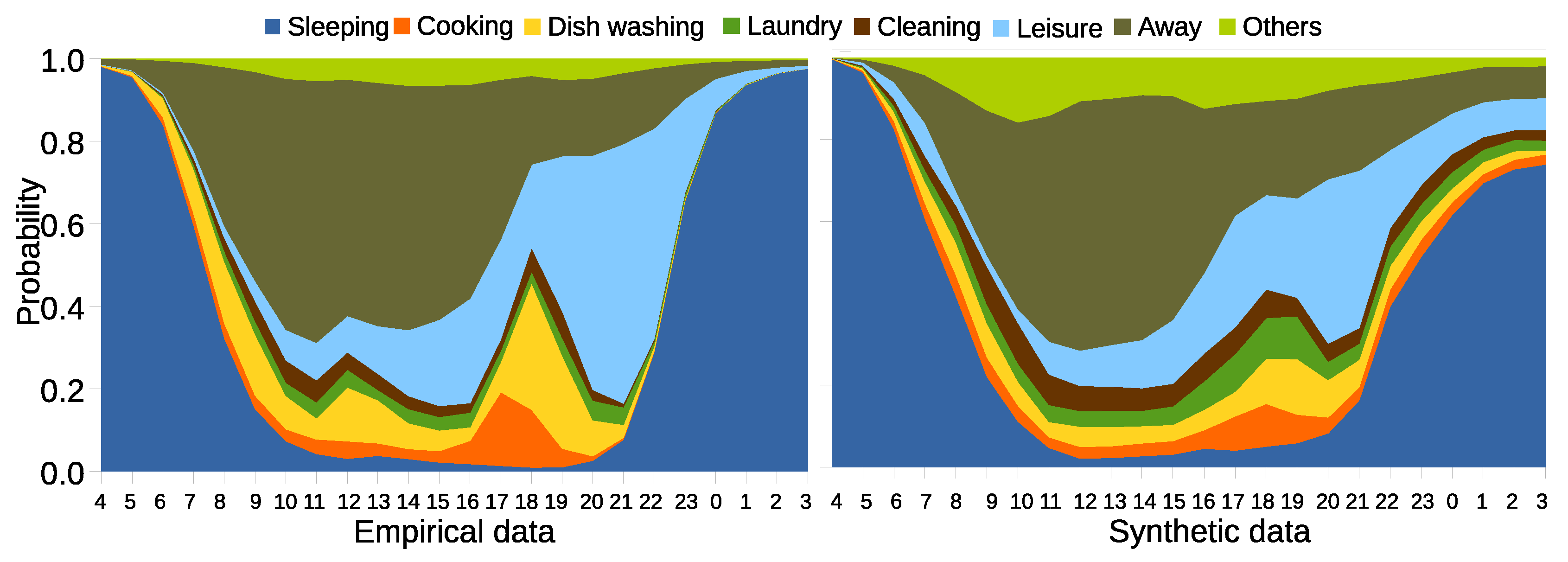
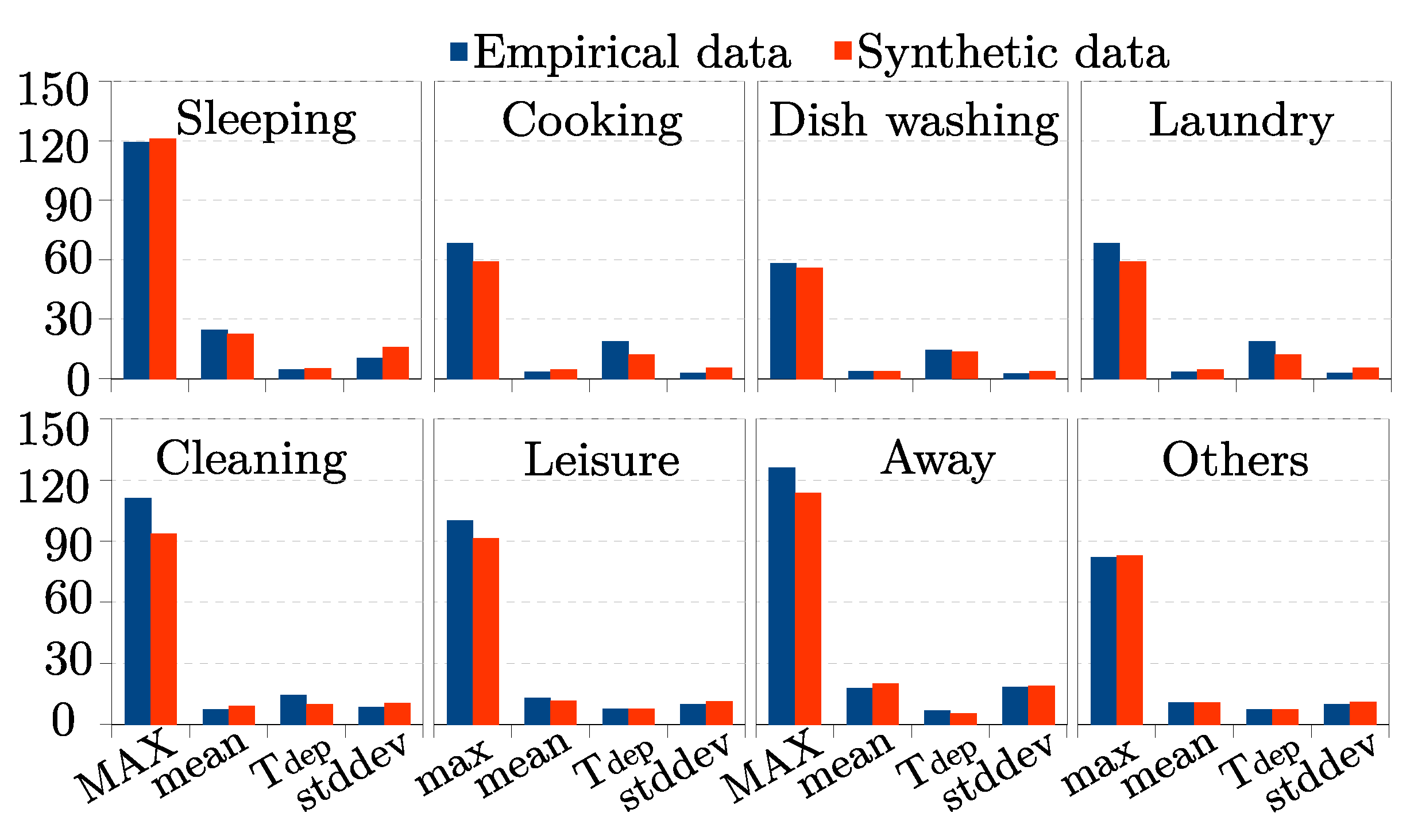


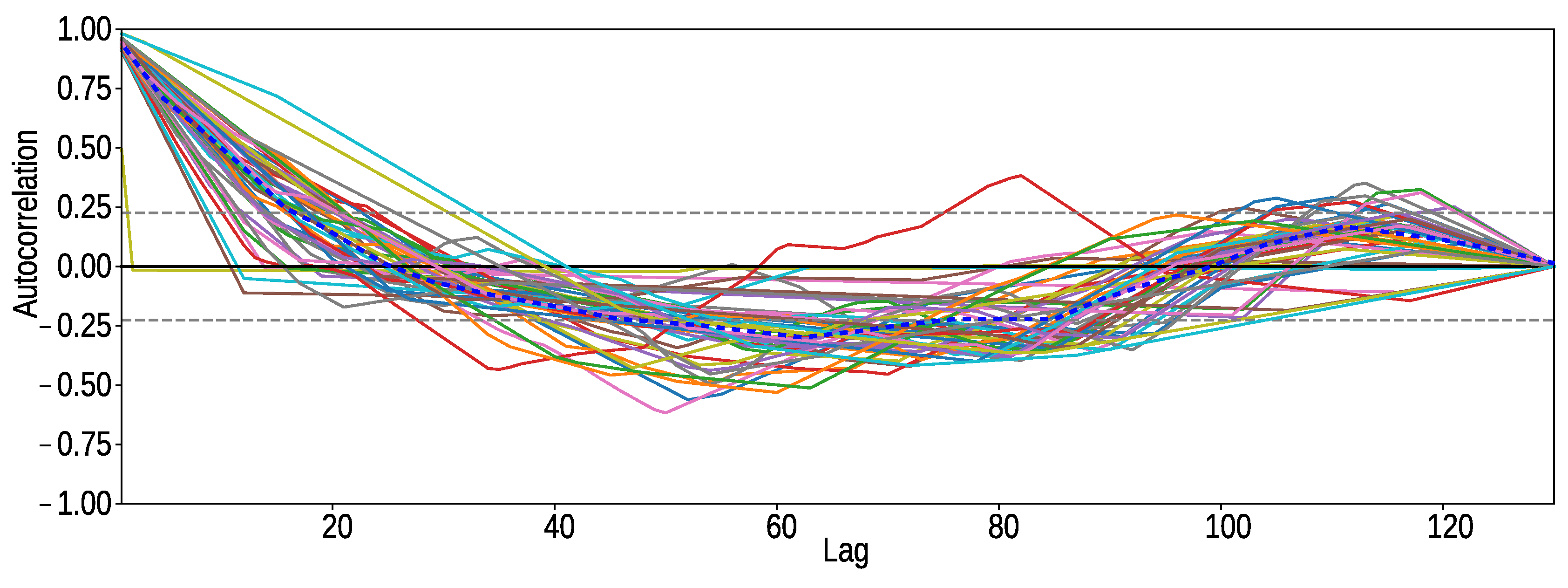
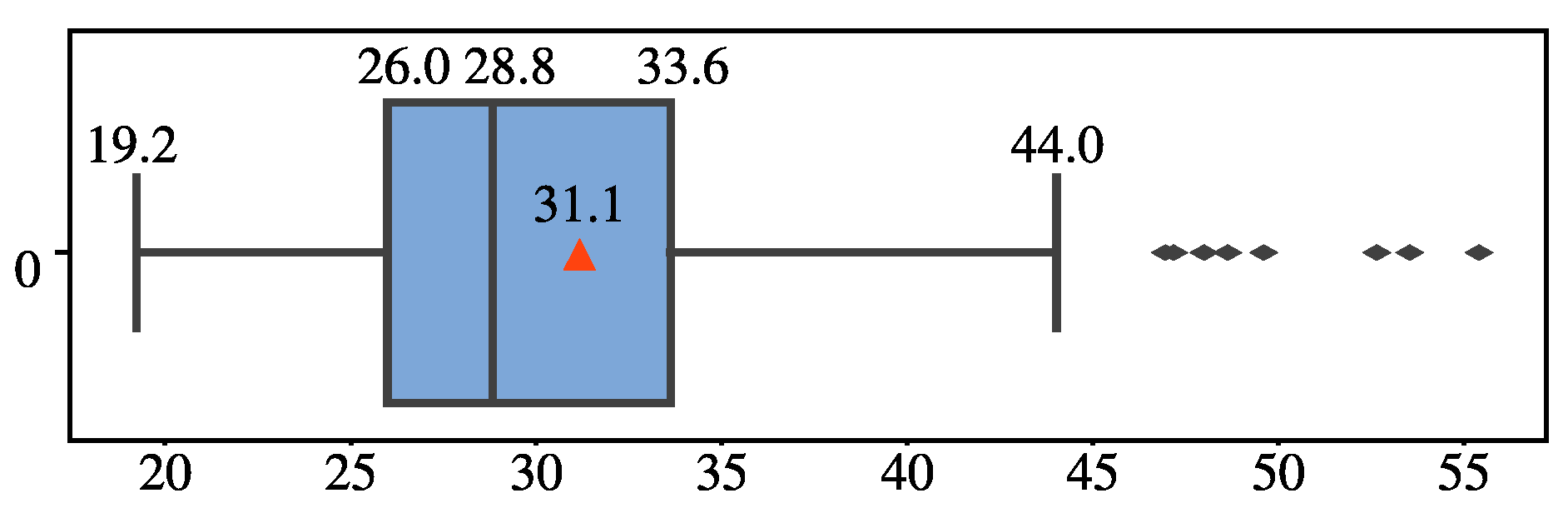
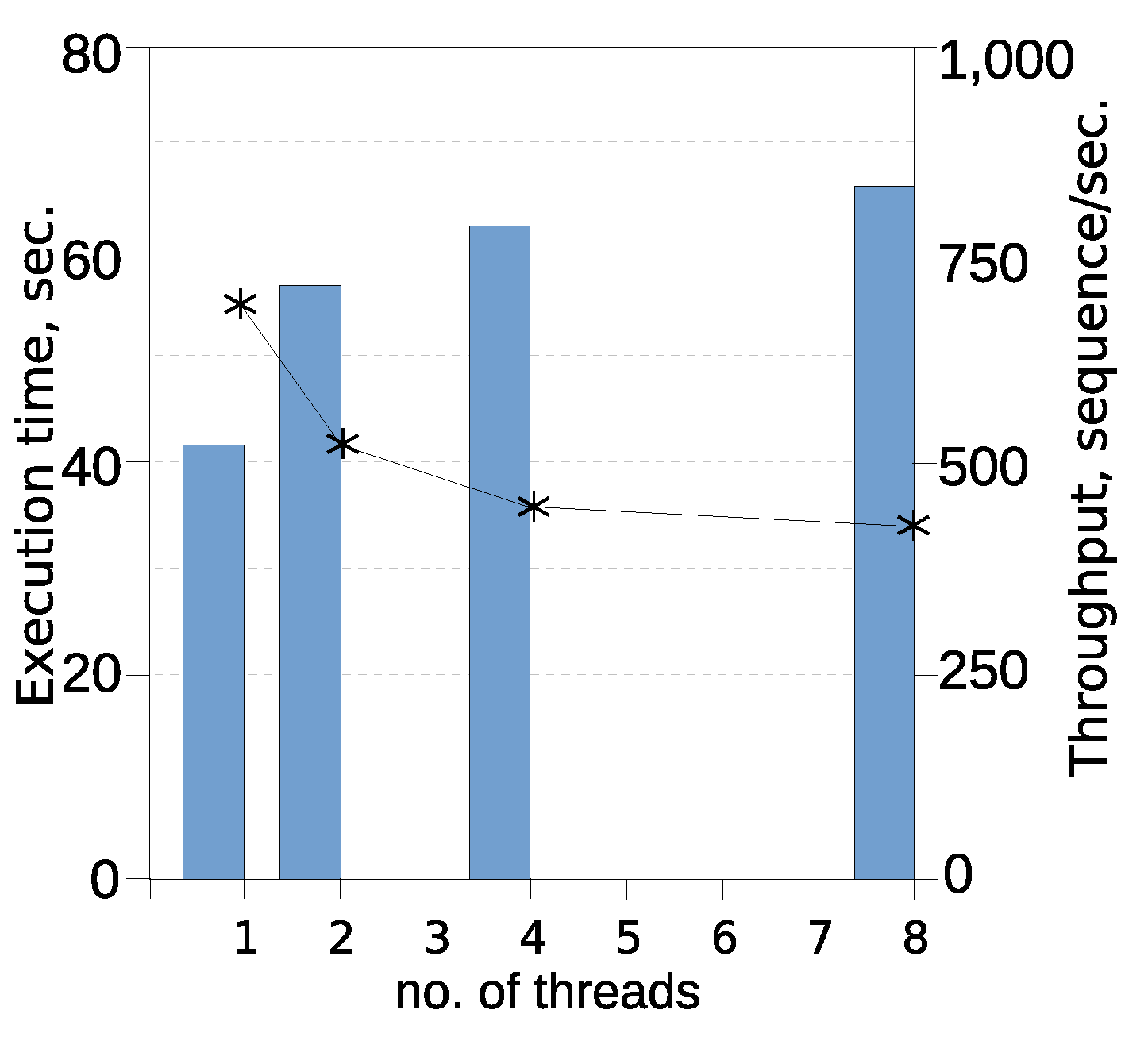
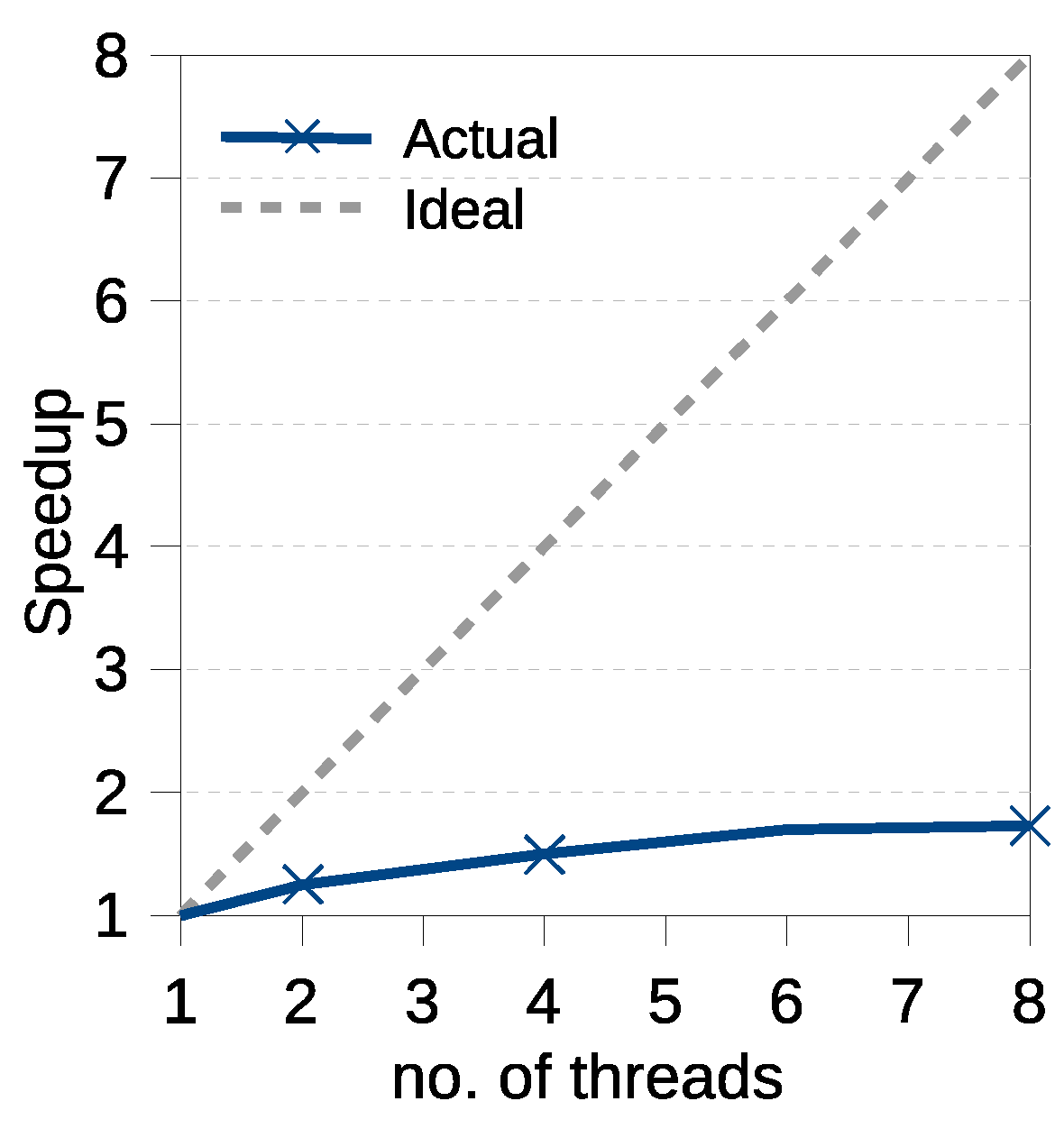
| Ref. | Data | Data Size | Resolution | Modelling Method | Modelling Purpose |
|---|---|---|---|---|---|
| [10,16] | UK TUS | 1000 | 10 min | Markov chain (3 states) | Occupancy and energy |
| [8] | Swedish TUS | 431 persons in 103 detached houses and 66 apartments | Down to 1 min | Markov chain (9 states) | Load profiles |
| [17] | Belgian TUS, Household budget survey | 3455 households | 10 min | Markov chain (3 states) | Occupancy |
| [1] | Harmonised European TUS | 19295 people from 9541 households. | 10 min | Markov chain (2 states) | Occupancy |
| [18] | American TUS, Energy consumption survey | 10000+ participants | 10min | Directed graph | Activities and electricity usage of appliance |
| [19] | IRISE database [20] | 900 households | 24/48/168 h | Decision tree | Electricity usage of appliance |
| State No. | Name of Activity |
|---|---|
| 1 | Sleeping |
| 2 | Cooking |
| 3 | Washing dishes |
| 4 | Laundry |
| 5 | Cleaning |
| 6 | Leisure |
| 7 | Away |
| 8 | Other |
© 2019 by the authors. Licensee MDPI, Basel, Switzerland. This article is an open access article distributed under the terms and conditions of the Creative Commons Attribution (CC BY) license (http://creativecommons.org/licenses/by/4.0/).
Share and Cite
Liu, X.; Yang, Y.; Li, R.; Sieverts Nielsen, P. A Stochastic Model for Residential User Activity Simulation. Energies 2019, 12, 3326. https://doi.org/10.3390/en12173326
Liu X, Yang Y, Li R, Sieverts Nielsen P. A Stochastic Model for Residential User Activity Simulation. Energies. 2019; 12(17):3326. https://doi.org/10.3390/en12173326
Chicago/Turabian StyleLiu, Xiufeng, Yanyan Yang, Rongling Li, and Per Sieverts Nielsen. 2019. "A Stochastic Model for Residential User Activity Simulation" Energies 12, no. 17: 3326. https://doi.org/10.3390/en12173326
APA StyleLiu, X., Yang, Y., Li, R., & Sieverts Nielsen, P. (2019). A Stochastic Model for Residential User Activity Simulation. Energies, 12(17), 3326. https://doi.org/10.3390/en12173326






